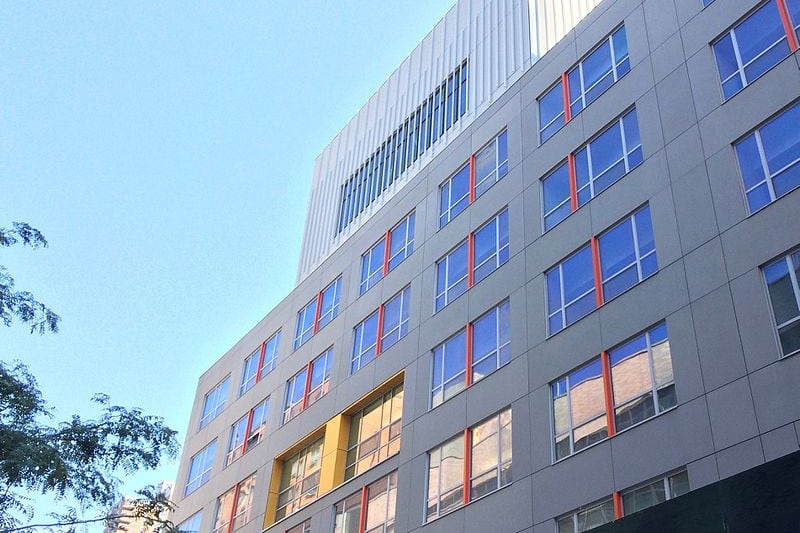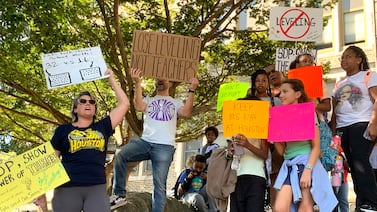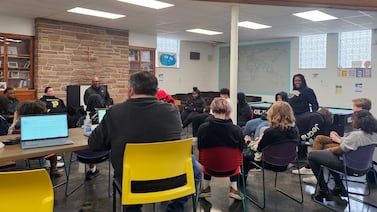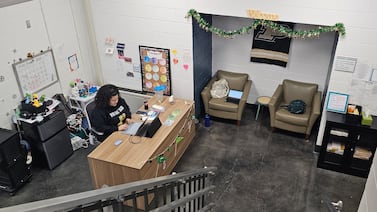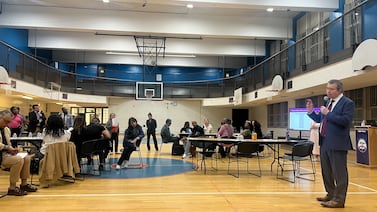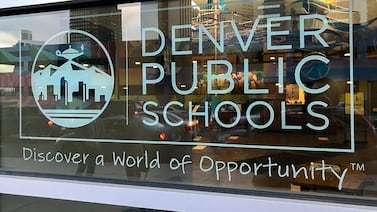The deadline is fast approaching for New York City’s rising freshman to apply to high schools, capping off an admissions season unlike any other.
The coronavirus pandemic has forced major changes this year, some of which were heralded for their potential to help chip away at segregation in the city’s schools. But the challenges of navigating the application process in an ongoing pandemic mean that information is harder to come by. Coupled with a shortened applications period, that could leave behind those who have fewer resources to navigate the system — setting the city back in its push for greater school diversity.
“We’re talking about this application process as if it’s business as usual,” said Yasmin Schwartz, an assistant director at the Cypress Hills Local Development Corporation, a social service agency that, among many other things, helps guide families through the application process. “In terms of the support for the communities that really, really need that guidance and support, it’s not there.”
Sprint to the application deadline
One of the biggest hurdles to bolstering diversity at New York City high schools for next year’s freshman class may be time — or the lack of it. Applications are due March 1 for high school, and Feb. 23 for middle school, after the education department recently extended the deadlines.
The admissions process, which takes about three months in a typical year, has been basically cut in half, said Elyse Mitchell, who works with middle school students through Bridge to Enter Advanced Mathematics, or BEAM, a program for students interested in pursuing careers in science and engineering. Her organization helps families find the right schools for their applications.
“This is a crucial moment in a student’s pathway in their education. Some high schools in New York City don’t offer calculus,” she said. “If you are a student who wants to be a mathematician when they’re older, they need to take calculus.”
Parents and students had to wait for months to learn whether schools would be allowed to use selective admissions screens this year. The widespread use of these competitive admissions criteria is often blamed for driving New York City’s status as one of the most segregated school systems in the country. The most common screens — grades, attendance, and state test scores for last year’s fourth and seventh graders — were upended last spring.
But the practice will still continue this year, just with different considerations. For example, schools can no longer consider a student’s attendance records.
Mitchell had to sprint to help students tailor their applications around the new entrance criteria. All of a sudden, high schools were allowed to look at academic records as far back as sixth grade. That meant hunting down test scores and report card grades that were not automatically uploaded to students’ virtual accounts, and finding different schools to apply to depending on how those schools are weighing different screens.
“It’s just an array of ways that schools are gauging students, so we have to be very particular about the school recommendations we’re sending out,” she said. “If a school is weighing your sixth-grade grades more, and you didn’t have that great of a sixth grade year but you absolutely knocked it out of the park in the first part your seventh grade year, that’s a bummer for that student.”
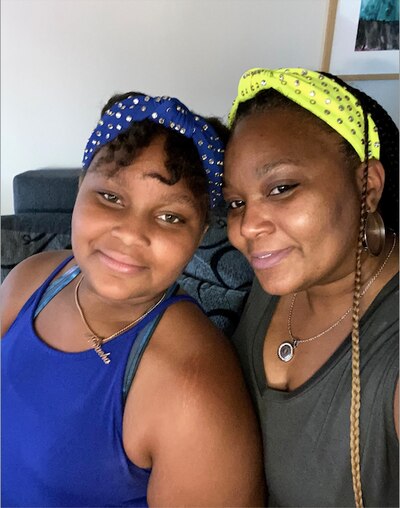
One of Mitchell’s students, Nevaeha Giscombe, is considering some schools that require application essays and work samples. The 13-year-old and her mom are getting help from BEAM and their middle school; still the process still feels like a maze of virtual tours, application requirements, and deadlines.
“We didn’t realize how intense,” the process is, said her mom, DeQuander Cole-Giscombe. “I feel like we’re preparing for college.”
Grasping for information
Organizations that help families navigate the application process say they are often operating in an information vacuum this year.
“The lack of information is a whole other level,” said Raina Narita, who counsels low-income students through the application process with the nonprofit Breakthrough New York. “As the person who’s supposed to be the expert, it’s stressful. So I can’t imagine how the families are feeling.”
In a typical year, getting to know school options could mean hours spent criss-crossing the city, sometimes during the work day, with fares spent on buses and subways piling up. This year, online tours save families travel time and money, and may offer a better window into a school’s culture, featuring more student and staff voices throughout, said Elissa Stein, an admissions consultant who helps parents navigate their options.
But even as school tours have gone virtual, there is no one-stop place to learn about these online events or find pre-recorded informational videos.
There is also no central place to check whether schools have changed their screens — and many have. The Beacon School in Manhattan will no longer use academic grades and test scores, but is instead asking students for an essay and portfolio of work. NYC iSchool has also dropped academic screens in favor of an online survey that asks why students want to attend the school.
Without a resource to check for these kinds of changes, students may have no idea that they could be newly eligible to apply to a school that is, for example, no longer limiting applicants to only those with top test scores.
With middle schools closed since November and not returning until the end of February, nonprofits have to counsel students fully online. Caroline Taveras, director of the Middle School Student Success Center, which is supported by the Cypress Hills Local Development Corporation, works with about 200 rising freshmen at the Abraham Lincoln campus. In a normal year, she said she might be able to pop into a classroom and share information and reminders with students lagging on their high school applications. Those quick interactions are hard to replicate through the computer screen.
“It’s usually easier to engage with the kids,” she said. “There are some walls that we’re hitting in terms of being able to constantly engage students and constantly let them know, ‘Hey, this is happening.’”
Schwartz, the assistant division director of middle schools at Cypress Hills, said she worried that many students may not even fill out applications this year. Teachers and nonprofits like hers are overwhelmed with pressing issues, including “spending hours upon hours trying to find kids — literally trying to find kids they haven’t seen online.”
Katie O’Hanlon, a spokesperson for the education department, said that the city has held more than 20 “very well attended” training sessions for school guidance counselors helping students through the application process. Almost 14,000 families have attended online information sessions about middle and high school admissions this year. Officials also reached out to all of the city’s local education councils to help spread the word to parents about this year’s process.
“This entire school year has been one unlike any other and due to the pandemic, we are operating on a shorter than usual timeline for admissions. This does not mean there are any less resources for families and support for their various needs,” O’Hanlon said.
How will screening affect student diversity?
While some schools have dropped their admissions screens, plenty others have not. There is reason to worry that using academic records this year could worsen disparities, as schools are permitted to look at test scores from even further back in a student’s school career. (All middle schools, unlike high schools, have eliminated screens for this year’s cycle.)
The education department’s own analysis shows that one in six students fared at least one level worse on state tests in sixth grade versus their seventh grade year. In 2018, the year that the current crop of rising freshmen took their sixth grade English state tests, 35% of Black students and 38% of Latino students were rated proficient. For white and Asian students, it was 70% and 69%, respectively.
About 20 high schools have taken steps in recent years to proactively support diversity through admissions policies that give priority to vulnerable students, such as those coming from low-income families. But with roughly 400 high schools across New York City, the initiatives aren’t likely to have a widespread impact.
Will removing district boundaries change student’s decisions?
The elimination of district priorities citywide has the most potential to change student demographics. New York City students apply to high schools in a process that was intended to open up opportunities to attend schools outside their ZIP code. In practice, however, that opportunity was severely limited in some neighborhoods, where sought-after schools gave priority to students who lived in the surrounding district.
Many schools with high graduation rates and enviable course offerings were off limits, even to students with stellar academic records. Schools like Eleanor Roosevelt High School, on the Upper East Side, for instance, gave priority to students living in Manhattan’s District 2. Last year, every single seat was filled by students living in the district, which spans some of the city’s wealthiest neighborhoods.
“I cannot wait,” Taveras said of the change to geographic priority. “That opens up more opportunities and options that students can apply to.”
Taveras usually gives her students lists of schools to help narrow their search, focusing on those that are up to an hour away, have high graduation rates, and offer opportunities to take advanced classes. This year, the elimination of district priorities means that list is much longer, with many new options in Queens, where Taveras said some schools gave informal priorities to students living nearby.
“There’s a lot of hidden stuff. That’s where a lot of issues with screened schools and selectivity, that’s the problem,” she said. “It’s not written down. But we’ll go to open houses and they’ll say it.”
Those under-the-radar screens may also disappear for now since this year the education department will take responsibility for ranking students for admission, rather than schools themselves.
While promising, removing district priorities isn’t likely to change much for many other schools: those that can’t compete for top-performing students. The depth of screening in New York City has led to staggering academic segregation among schools, with well-performing students funneled into a tiny number of campuses that also tend to be racially isolated.
In many other schools, most incoming students will start below grade level. Concentrations of vulnerable students can make it harder for them to catch up, especially in segregated schools that lack the resources they need — and the connections to help secure them.
Mitchell called those disparities, which can result in fewer sports teams and clubs, advanced course offerings, or guidance support for students, “the root of the problem.”
“Removing district restrictions isn’t going to magically make the schools more diverse,” she said.
While the changes may open up more opportunities for high-achieving students in neighborhoods with fewer high school options to attend better-resourced schools, the question is how many students and families will take that chance. Students have sometimes faced racism at some of the city’s most selective schools, which are often disproportionately white or more affluent.
“Even though that’s opened the opportunity to put that school on your list and it will be a more reachable option, will that make sense for my student?” asked Narita, who wondered if her students would feel “comfortable and safe” at predominantly white schools. “I think that’s a question we’re going to really need to dig deeper into.”
If you are having trouble viewing this form on mobile, go here.


